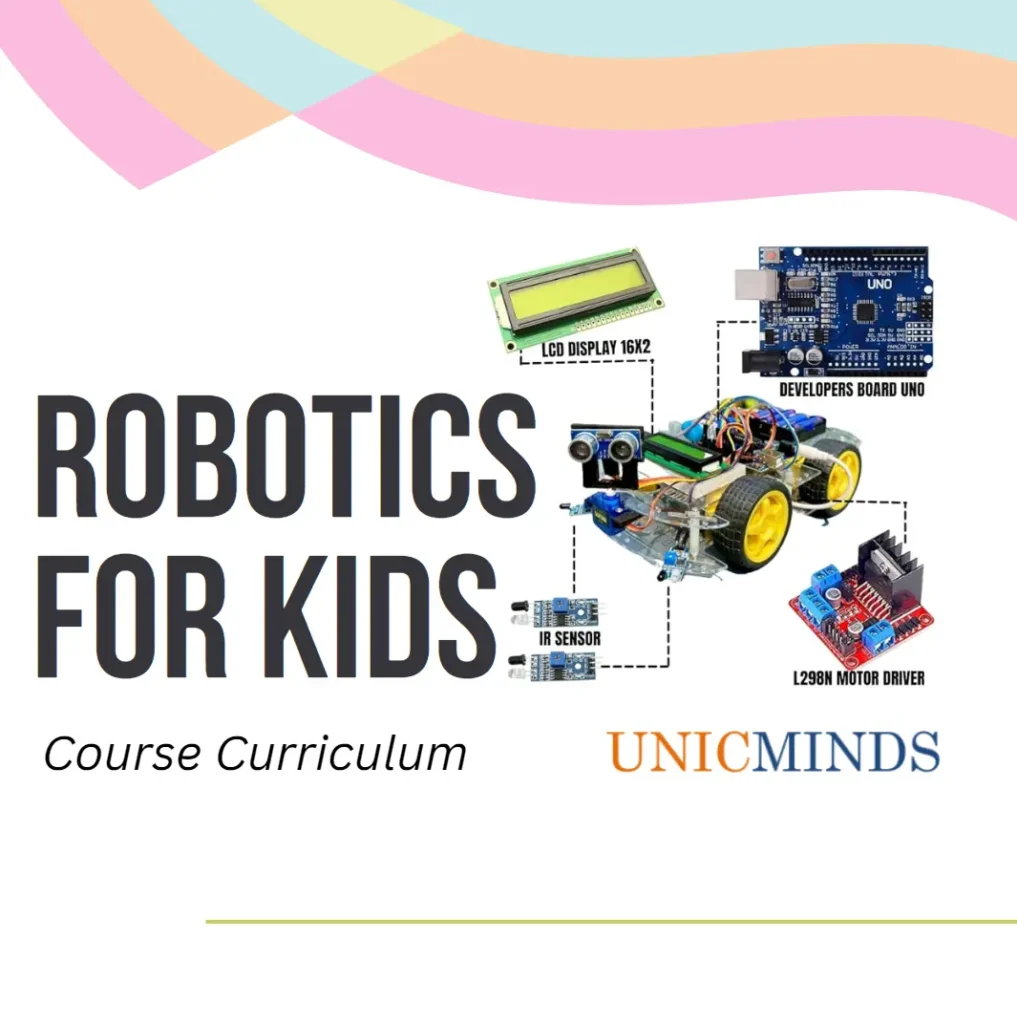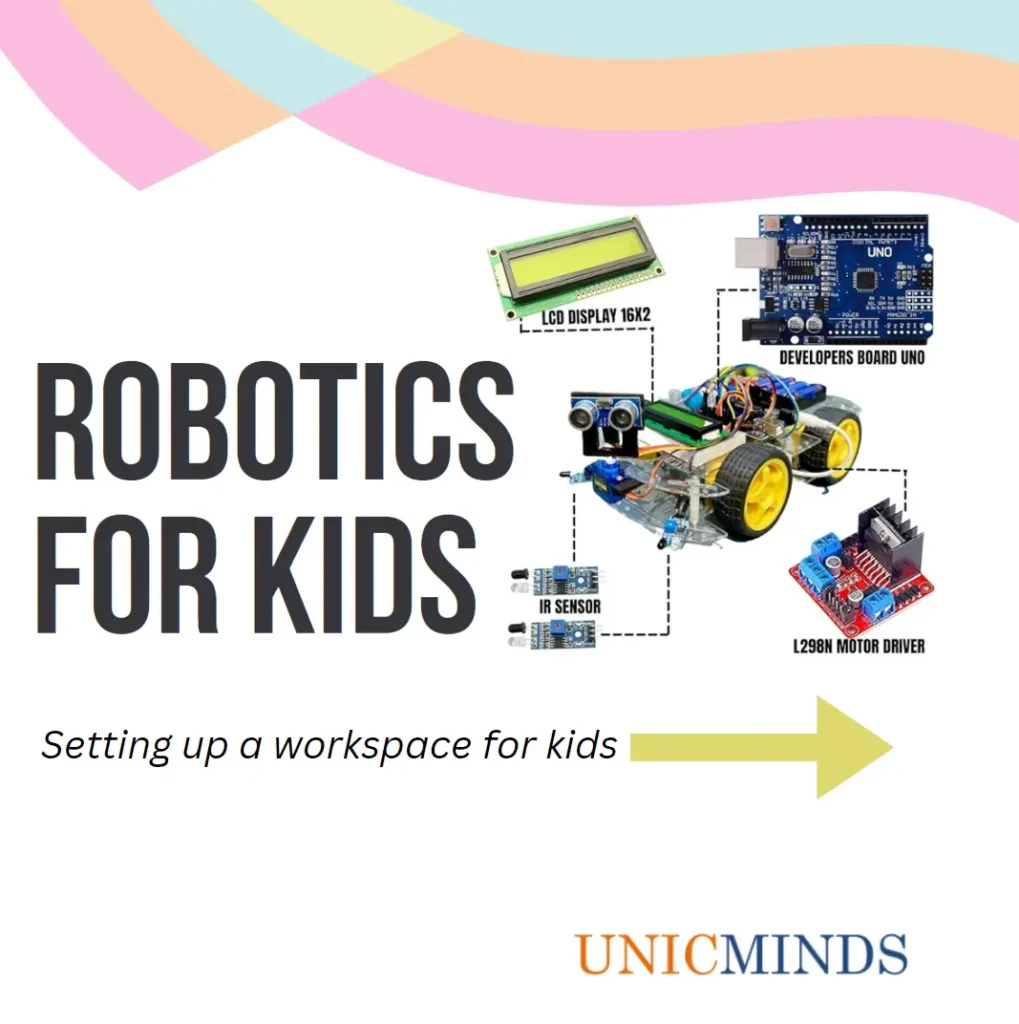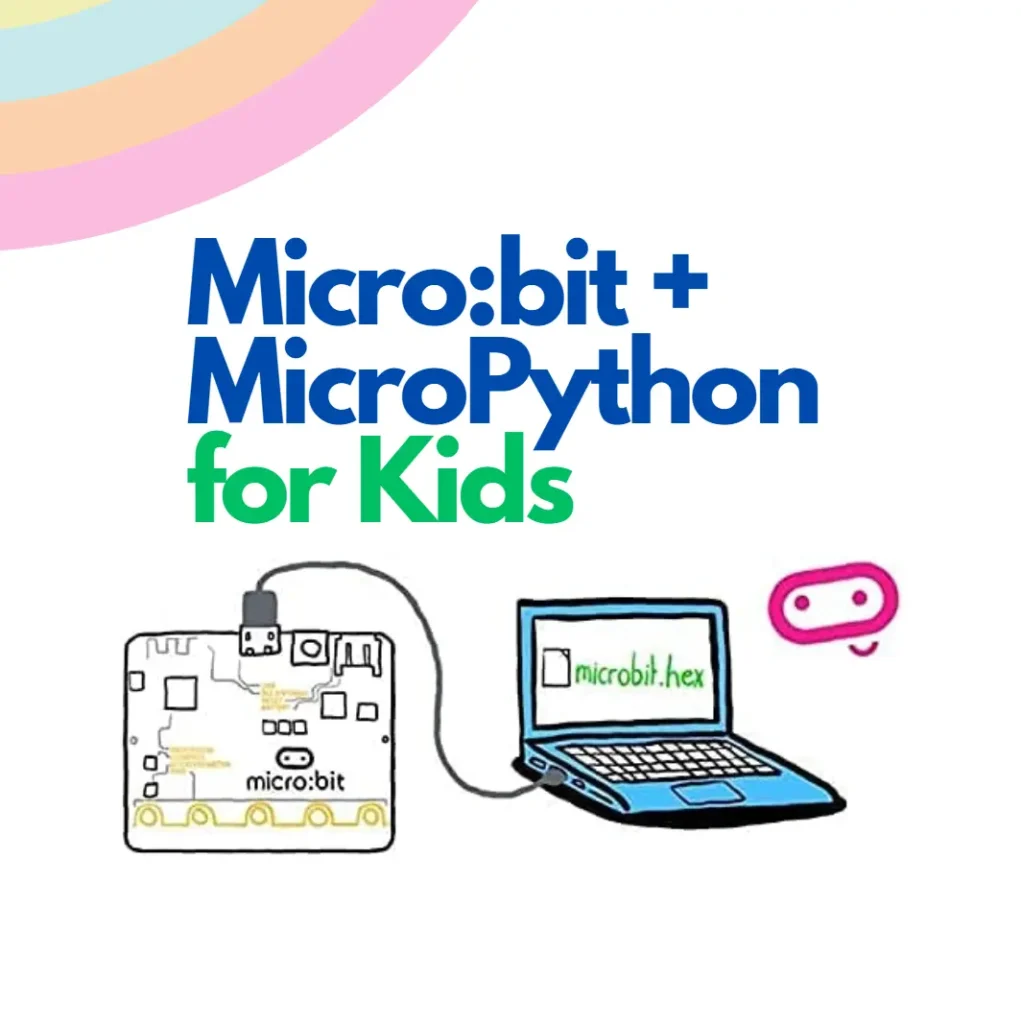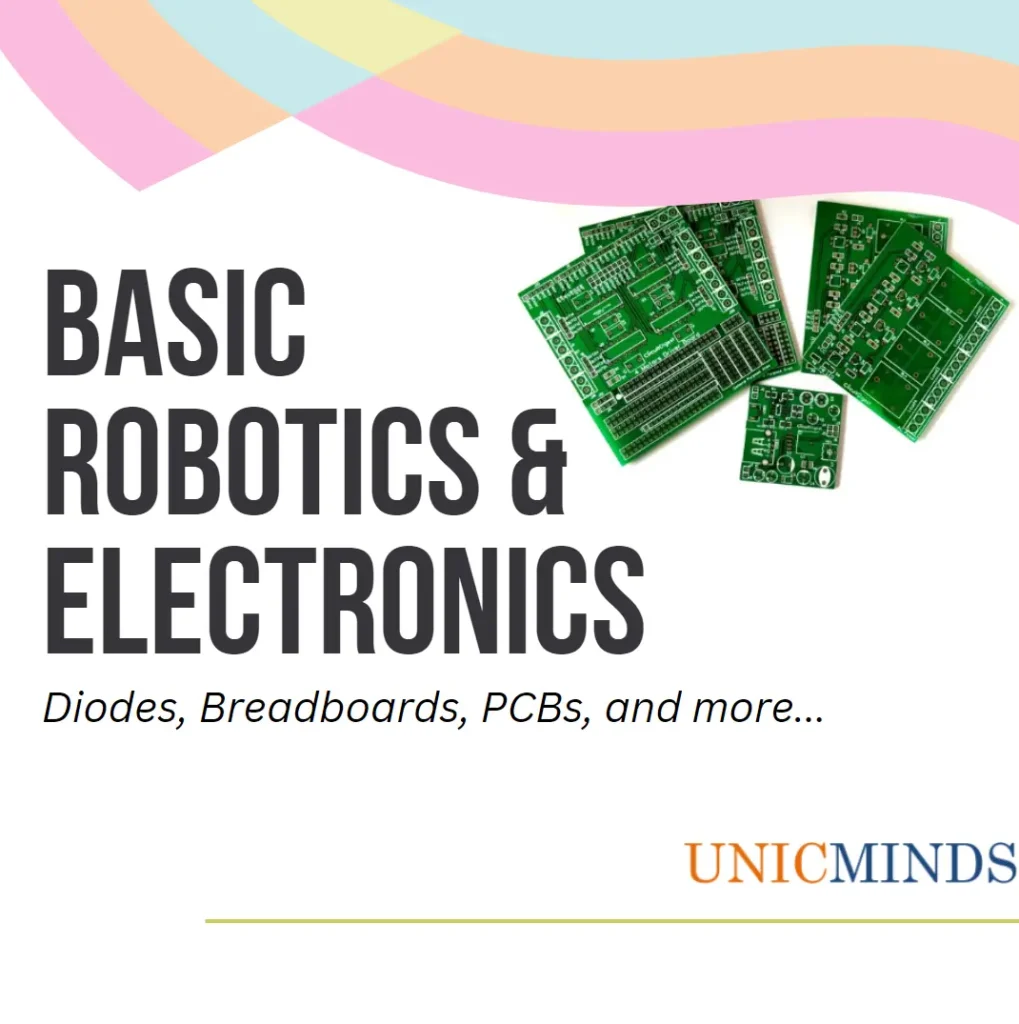Robotics are fun projects to enroll your child into! It’s a fun & engaging way to learn about Building & Programming Electronics & Robots. Your kid will start from the fundamentals and take the right gradual steps in learning about the concepts and technology. This approach will reflect in your kid’s thought processes and lifestyle and you would see a mental transformation in them.
Robotics for Kids – Curriculum Overview
Robotics is the study of programming machines to do specific tasks by combining the use of electronics, mechanics, and computer code. Robotics for kids refers to making kids understand what a robot is, how robots function, how they move, and how to build one in a simpler way. Robotics for kids is the study of robots specially designed for kids to make them understand the basic concepts of robotics.
Robots have different electrical and electronic components such as power supply, actuators, electric motors, piezo motors, ultrasonic motors, locomotive parts, pneumatic air muscles, muscle wires, sensors, and more. This course will help children understand how an electromechanical system works, the basics of circuitry, and various sensors that are needed to build basic robots.
Curriculum Detail
- Introduction to basics of current flow, voltage, conductors, & short-circuit safety
- Theory of Diode, Resistor, LED and introduction to breadboard
- Basics of Circuit Theory for Kids
- “Safety Precautions” while working with electronics
- Arduino IDE setup and Arduino Code Structure – setup and loop functions
- Knowing Your Arduino Uno – Power connections and Arduino PINs
- Project 1: Arduino PINs, and blinking LED project
- Project 2: Blinking two LEDs
- Introduction to Transistors as switches
- Project 3: Using transistors as switches in circuit and blinking/toggling LEDs
- Microcontrollers vs Microprocessors
- Introduction to DC motor
- Project 4: Working with DC Motor and turning a car wheel
- Recap of Learnings So Far
- Project 5: Working with Ultrasound distance measuring module
- Recap of all Circuit and Component Basics
- Project 6: Working with Humidity Sensor and Temperature Sensor and displaying the temperature and humidity of your room on an LCD panel.
- Final Project: Building Your Own Robotic Cars – Obstacle Avoiding Car & Path Following Car
The projects mentioned above will need the student to buy the following basic components: Arduino Uno, Electronics Kit containing LEDs, resistors, transistors, wires, breadboard, Ultrasonic Distance Sensing module, humidity and temperature sensor module, and an LCD module. On average, this will totally cost about 1000 INR (or under $20-25) to buy all modules online.
While we may not work with all the major sized components, we still provide the necessary basics of different types of robots and how do they get their energy, flexibility, and balance. So, we provide them additional understanding on the below at a theoretical level too.
- Power Supply: Robots are powered by batteries, solar power, hydraulic, and pneumatic.
- Actuators: We use this to convert energy into movement in the robot.
- Electric motors (AC/DC): We need this for rotational movements in the robot.
- Pneumatic Air Muscles: As we can say that they contract almost 40% when the air is sucked in them.
- Muscle Wires: Although, we have noticed that it contracts by 5% when an electric current is passed through them.
- Piezo Motors and Ultrasonic Motors: Basically, we use it for industrial robots.
- Sensors: Generally, we use it in a task environment. As it provides information of real-time knowledge.
Hope this is useful, thank you.
You may like to read: Robotics for Kids – The Setup that Every Kid Needs, Boolean Blocks in Scratch, & Top Roblox One Piece Games




